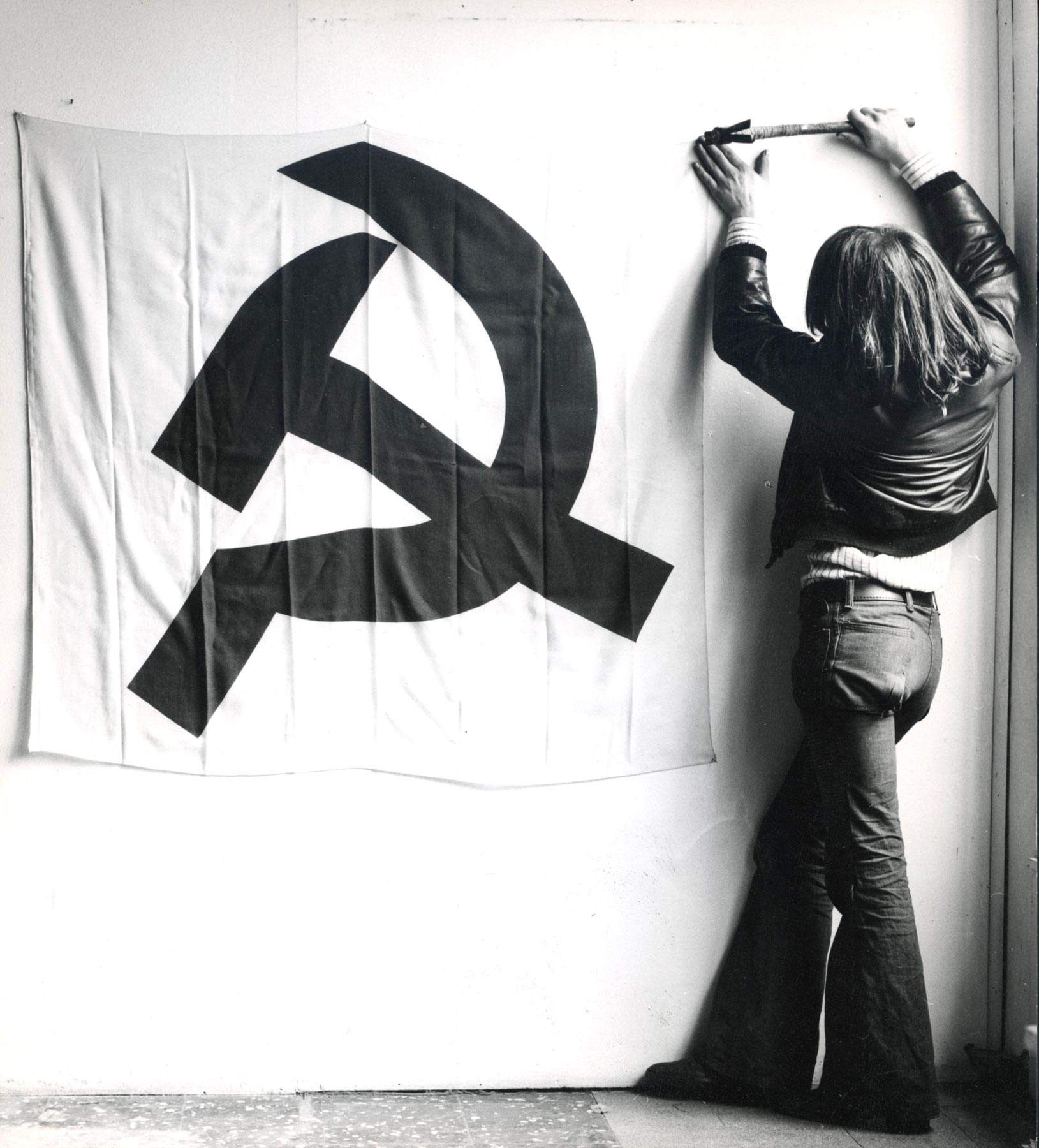It is scheduled from September 30, 2020 to January 16, 2021, at Galleria Milano on Via Turati in the Lombard capital, the exhibition Enzo Mari, Sickle and Hammer. Three of the Ways an Artist Can Contribute to the Class Struggle, a review that recalls an important solo exhibition of the artist and designer Enzo Mari (Cerano, 1932) held in Milan in 1973: it was precisely the exhibition with which, on April 9 of that year, Carla Pellegrini inaugurated the new premises of Galleria Milano.
The exhibition, entitled Hammer and Sickle. Three of the ways an artist can contribute to the class struggle, caused a great stir and success with the public. Today, almost fifty years later, a faithful reproduction of the same exhibition is offered, reconstructed philologically thanks to a research operation that mainly involved the Galleria Milano Archives and the Enzo Mari Archives. In the gulf that separates the perception of the symbol from the 1970s to the present day, through the vision of an enlightened author like Mari, the exhibition intends to read the epochal change that has affected not only society, but also the cultural fabric and the deepest spirit of the city of Milan.
The project then arose from an exercise proposed to a student, Giuliana Einaudi, of studying a widespread symbol known to all: the hammer and sickle. The starting point was a collection of data, in which emblems reproduced on walls, party communications, and leaflets were compared, in an attempt to broaden the research to as many places as possible. The second moment was the design of an aesthetically high quality symbol, leading to the conclusion that formal value does not affect the meaning conveyed. Hence the works in the exhibition, all depicting the hammer and sickle: the two individual objects of use, the symbol designed in the studio, a large wooden sculpture, wool flags silkscreened in different colors, a lithograph reproducing the research with 168 symbols, and a silkscreen in two colors. These last three items were included together with a small publication in a folder published by Edizioni O, the publishing house of Galleria Milano founded by Baldo Pellegrini, Carla’s husband.
After a lively debate, the same evening of the opening, the film Comitati politici - Testimonianze sulle lotte operaie in Italia nella primavera del ’71, made by Mari with the Gruppo di Lavoro, composed of several students from the Centro Sperimentale di Cinematografia in Rome, was screened. The documentary, rediscovered after a long search, has been digitized by the Home Movies Archive in Bologna and will be on view in the exhibition.
The current exhibition is accompanied by a volume published by Humboldt books, edited by Nicola Pellegrini, with texts by Bianca Trevisan and Riccardo Venturi. The publication anastatically reproduces the 1973 catalog, along with a rich selection of archival materials that restore the temperature of the time: photographs, plans, press reviews and various ephemera. Bianca Trevisan’s essay philologically reconstructs the process behind this project by Enzo Mari, bringing to light as yet little-studied aspects of his work, while Riccardo Venturi weaves a multifaceted narrative full of heterogeneous quotations. Sickle and Hammer is an exhibition realized with the invaluable help of the Enzo Mari Archive. For all information you can visit the Galleria Milano website.
Image: Enzo Mari, Hammer and Sickle, proof of the flag, 1973. Photo by Aldo Ballo. Courtesy Galleria Milano, Milan
 |
| Does art contribute to the class struggle? Mari's '73 exhibition reconstructed in Milan |
Warning: the translation into English of the original Italian article was created using automatic tools. We undertake to review all articles, but we do not guarantee the total absence of inaccuracies in the translation due to the program. You can find the original by clicking on the ITA button. If you find any mistake,please contact us.